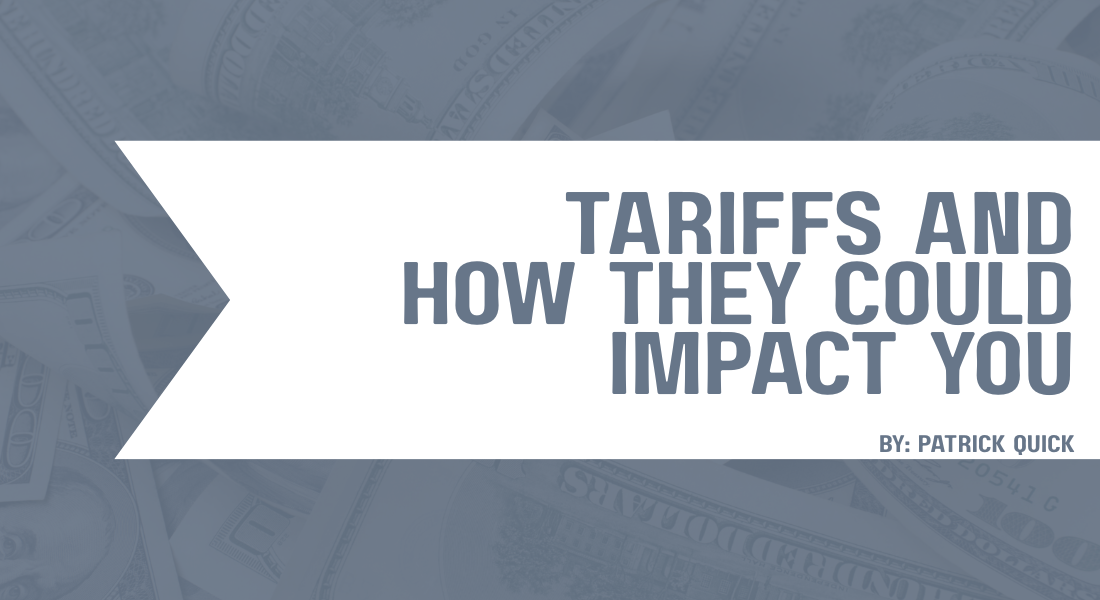Tariffs have been imposed and withdrawn by the U.S. over the past few weeks, which has markets on edge as fears grow over a potential recession. Students may feel impacts from these economic changes, as global leaders are uncertain about what’s next.
What is a Tariff?
Tariffs are taxes that are placed on imported goods coming from countries abroad. They are typically placed to penalize trading opponents and incentivize domestic production of goods.
Trump’s Tariffs
On April 2, a series of tariffs were announced at a press conference at the Rose Garden. A set of over 50 countries were on the list, raising the effective average tariff rate to 22.5%. That would be up from 2.5% last year and the highest level since 1909, according to the Associated Press.
Stock markets reeled from this decision. On April 9, the 22% tariffs were paused for 90 days, bringing the baseline tariff levels to 10% in the meantime. Tariffs on China were an exception to this rule and raised to 145%.
An exemption to the auto and tech industries to tariffs has been raised by President Trump on April 11. China is a critical part of the supply chain for companies such as Apple.
However, USA Today reported that Commerce Secretary Howard Lutnick told ABC News that the carve-outs for the electronics products are temporary and tariffs for those items would be included in a duty on computer chips that Trump plans to impose in a month or two.
Uncertainty around these decisions has raised uncertainty over the future of the economy, as the pause only lasts 90 days.
NBC says that there is growing concern within corporate America around the future of the U.S. economy. Fears about a forthcoming recession hit a boiling point in the last two weeks, as President Donald Trump’s on-again-off-again tariff policy ratcheted up volatility in financial markets and stirred panic among some consumers.
What Does This Mean For Students?
While uncertainty lingers, the direct impacts of tariffs are beginning to make their way into the lives of American consumers. A 10% tariff is still in effect and tariff surcharges are already being added to some receipts.
Despite the pause on electronics, it is expected to be short-lived. You may have to pay more later in the year for electronics such as video game consoles, headphones, cell phones and Apple watches.
Along with that, clothing prices may go up due to tariffs on China. Furniture at retailers such as IKEA is manufactured in China and goes through Sweden for assembly. Furniture prices are expected to go up if no trade deal is signed. Appliances such as vacuums, fans and air fryers are expected to go up in price as well.
Imported groceries are also expected to be affected by the tariffs. Olive oil, coffee, tea and chocolate are some of the most commonly bought groceries that are imported.
What Now?
Uncertainty still looms, particularly after the 90-day pause on tariffs. Effects won’t be seen immediately, however, prices on Chinese goods will be felt first as they have the highest tariff rate.
Industries will react in different ways, industry exemptions and tariff rollbacks are sending stock markets on a rollercoaster ride. Companies and consumers alike are taking a wait-and-see approach to the tariffs as they begin to settle into American life.
Student Reactions
Jayden Anderson, a Freshman, said, “I saw how tariffs could potentially impact the rising price of eggs and how it could impact that industry.”
Jackie Taylor, a Freshman, said, “I am worried about trade, and my parents lost 50,000 in the stock market the day the tariffs took effect.”









